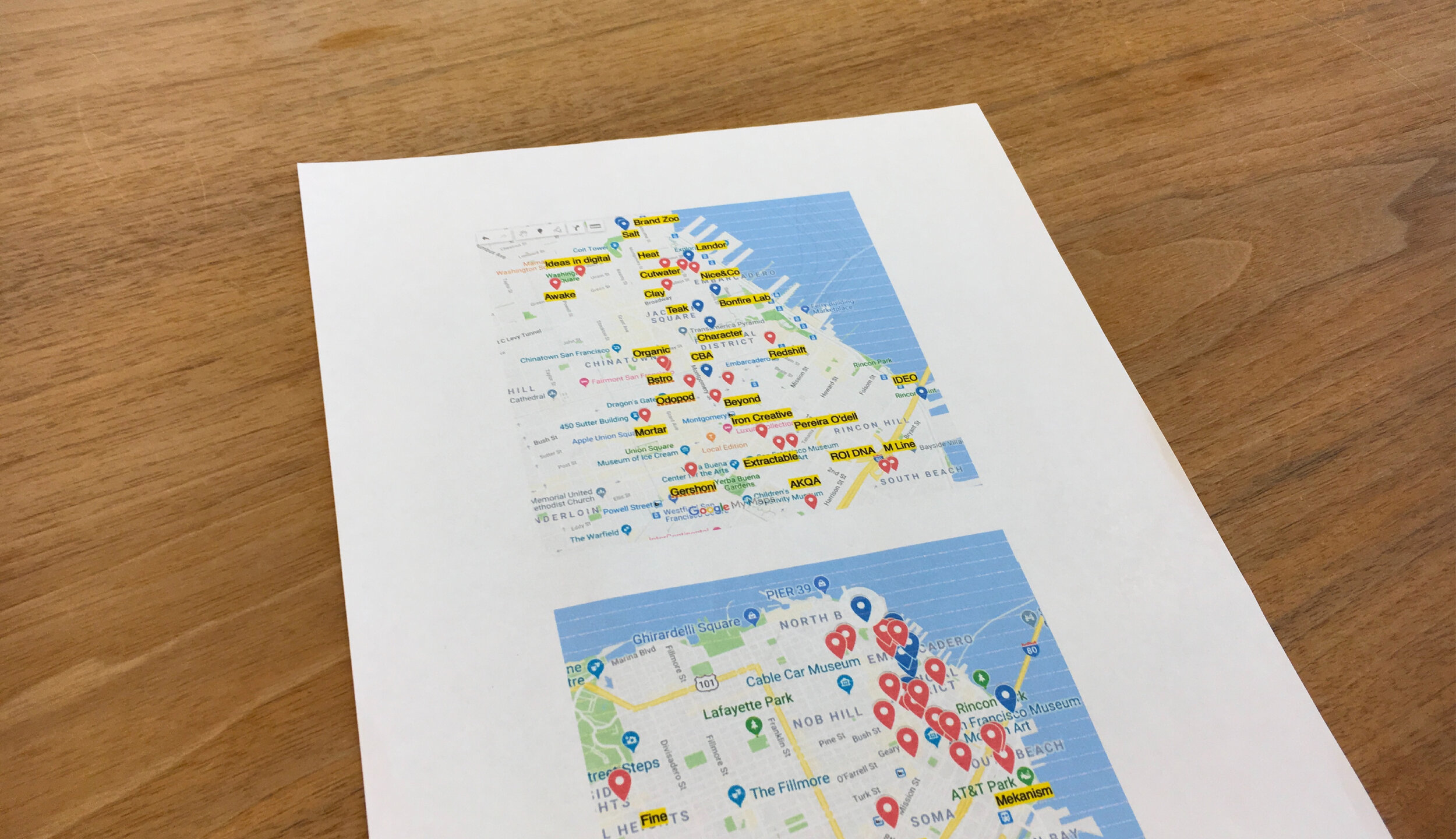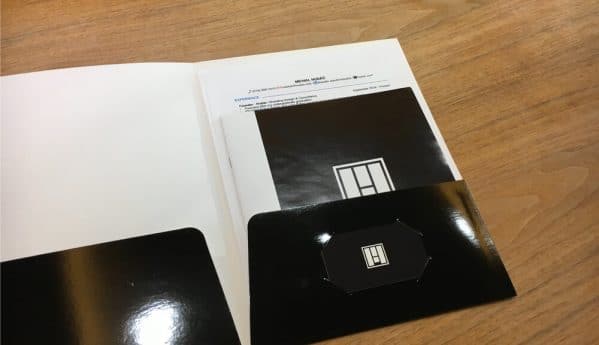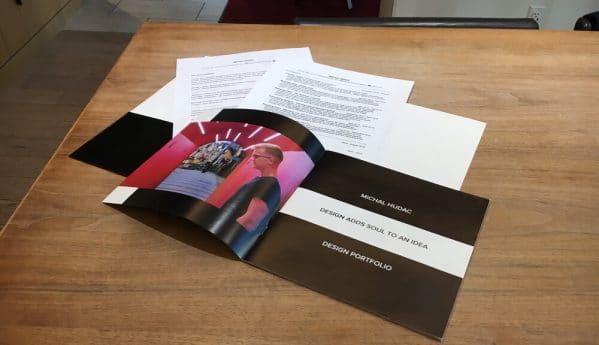This article on securing a paid internship was originally published here on Michal’s blog, www.hudac.com.
Oh my god, another boring blog about networking and polishing my CV… Nope. This one is different. I promise. But before you start reading, just know that I feel your pain. It was my Junior year and my internship preferences were demanding, bordering ridiculous. I wanted to work for a great company and get paid. I spent nights figuring out the right wording for my LinkedIn invitations, only to wake up the next morning and realize that nobody cared. No matter how Shakespearean your 300 character note is, people get too many to notice yours. I knew I had to stand out (don’t worry, no nudity required) and my 5 Step Plan, born out of pure desperation, seemed promising. The core differentiators of this plan are Step 3 and Step 4, but don’t skip the other ones. Let’s rock n’ roll.
1. Think
“Thinking is the hardest work there is, which is probably the reason why so few engage in it.”
– Henry Ford
The first step is good old thinking. Duh. Jokes aside, decisions you make in Step 1 will guide the rest of the journey. Many people ignore this when searching for a paid internship. “I will take whatever comes up” is the go-to response, which very often forces Marketing majors to take crappy Finance internships and vice versa. Every internship experience is useful, but you can do better than “taking whatever comes up”.
- Think about your major, what you want to do after school, and find what industries are related to it. I was a Marketing major, but enjoyed the creative/artsy part of it the most. Hence, my target industries were digital marketing, branding, and advertising. Mix, combine, and play around, just make sure that you can justify the link to your major. You can always stick to one industry, but if there is an industry similar to your preferences and provides similar experience, why limit yourself.
- If, after days of brainstorming, googling and asking people (friends, parents, teachers…) you can’t find any industry that you would enjoy working in, it is probably best you change your major. You don’t want to waste time and money on something you hate doing.
2. Search
“Unless your name is Google, stop acting like you know everything”
-Anonymous
After you have thought about the various industries you’re interested in, use Google to hunt down its stakeholders. I find Google Docs to be the most useful (Not a sponsor. Not yet.) for sketching my game-plan, but you can use any other note-taking software.
- Find all companies in your area that fall into your preferred industries. Look at their online presence and if you like their work, put their names down. I searched for “digital marketing agencies in San Francisco,” “branding agencies in San Francisco,” and “advertising agencies in San Francisco.” You can also expand the location if you’re willing to travel (I had a few Oakland agencies on my list). You don’t have to be humble with this search, put down a spectrum of winners (startups, middle-sized, international). Some of the biggest players like Landor or FutureBrand were on my internship target list too.
- With your magic company list, find as many of their employees as possible. The most reliable tool for this is LinkedIn. Search for the company name and switch the filter from people to companies. When you open the company profile, click on the “employees” link. If you have the basic account, as I did, you will only be able to see the first few (good enough). Employees can occasionally also be found on the company website or other third-party platforms. Find as many as you can. Note down their names, roles, and profile links.
- From this list, choose one person from each company that you think has the most authority to give you the internship. I know this may sound a little scary, but don’t overthink it. I was looking for a creative position, so I either went for some of the creative directors or the founders. HR staff is a good way to go too. If you can’t decide between multiple people, use your gut feeling and decide based on their online presence (blog, pictures, work…). You’ve got this!

3. Build
“Spectacular achievement is always preceded by unspectacular preparation.”
-Robert H. Schuller
This step will be the most time-consuming, so make sure to plan ahead. In Step 4, I describe my personal visits to all the companies on the list. However, you don’t want to arrive empty-handed. Even in this digital world, people still appreciate physical items. They rarely receive them and they feel bad for throwing them out (hence they also serve as reminders). That is why you’ll bring your very own presentation folders. Depending on your budget, choose only the first one or as many of the below items as you want.
Item A: Essential documents
These are the basic (printed) documents you must always bring. The first one is your resume/CV. Make it short and fun. Feel free to use the format I use (See “Resources” at the end of the blog). The second document is your cover letter, which is a short essay about who you are, why you want to do an internship at the company, and what contributions you can bring (don’t make it sound like they need you). At this point, we use the research from Step 2 and address the cover letters to the people you are targeting. All of these can be the same copy and paste text, just make sure you change the reason you like the company and what you can bring to the table (see more in “Resources”). The last document is a one-pager with your recommendations and their authors (Resources).
Item B: Website
A portfolio website always adds a little more depth to your presentation. This is especially the case for creatives, but I would not avoid it even if you are a Data Analytics major. Your website is a more visual version of your CV, filled with pictures and notes from all your previous projects and internships. You also have a chance to tell more about yourself and perhaps even start a blog. Not many people have a website and by having it, you already portray more effort than your competition. I recommend Wix.com or Squarespace.com, but there are many other platforms out there. The link to your new website can be on your CV or business card, which brings us to the last part.
Item C: The cherry on the top
To sweeten the deal, I have also ordered business cards and small brochures with my portfolio (Resources). Along with these, all other items were put into a black presentation folder, which also had my logo on top of it. As I mentioned earlier, if your budget does not allow it, printing documents from Item A and placing them in a transparent plastic casing will do. The remaining items felt appropriate for my industry and might increase your chances of securing that paid internship. I have included a complete cost breakdown of my efforts at the end.


4. Visit
“Good things come to people who wait, but better things come to those who go out and get them.”
– Anonymous
It’s showtime, unleash your goodies. In two days, I visited 36 companies in person, which means I needed to print 36 portfolios customized for each agency. Since I wanted my internship to start in January 2019, I did this just before Thanksgiving in November 2018. This gave me enough time to get replies from all the leads and negotiate details. I do not recommend doing 36 companies in two days.
My energy was very low towards the end. I also don’t recommend doing it close to any holidays because people take a few days off before the holidays even start. I think Tuesdays and Wednesdays are the best since people are already warmed up after the weekend and the next weekend is still too far to start slacking off. Put all of the companies from your list on a map and plan how many you want to get it done in a day. Make the visits logical and don’t walk from one side of the city to another if there is a company close to where you are. If any of the companies have open internship positions, make sure you apply first and then show the additional effort of coming in (tell them you applied in your cover letter).
The day before you visit all of your internship prospects, message all the employees on your list (not just the ones you decide to target). When sending invitations on LinkedIn, you can add a 300 character note (see “Resources” in the footnote) or use their email. Sending these one day ahead might land you an interview before you even visit. It also notifies them about your existence and when your portfolio comes in, they already might have seen your name. One day is also short enough for them to not reject and discourage you from coming.
Prepare an elevator pitch!
I am a pretty shy person when it comes to networking and this was not the most comfortable activity. My elevator pitch went something like this: “Hi, my name is Michal (shook their hand if appropriate). I am looking for an internship and brought this for Mr./Mrs. X. Could you please check if he/she is here so that I could give it to him/her personally? Or maybe I can just leave it here.” Bringing something to someone feels more legit than a stranger wondering around. Out of all 36 companies, only five let me pass the reception stage.
Most of the receptionists took the portfolio and I left. If they did bring in the person, I said the same thing and a little bit more about who I am and why I visited. None of these visits took over five minutes. Be prepared: some of your visits will be uncomfortable. You will meet receptionists not allowed to receive packages, face immediate rejections, and interact with complete morons.
Whatever happens, DO NOT leave without showing off your portfolio. Leave it on the floor and make sure to announce it out loud. This will definitely annoy them, but they might change their mind. Before every visit, I also listened to some motivational music and speeches (see “Resources”) or jumped up and down on one spot, just to pump myself up. After every interaction, make a note of what you saw and who you met. This information might be useful in the future (e.g. note down how you enjoyed meeting the receptionist Lucy).


5. Money
“I have tried raising money by asking for it, and not asking for it. I always got more by asking for it.”
– Millard Fuller
Be prepared for the waiting game
After all the hard work, I just had to wait. Some companies replied the next day, some after a week. Out of the 36 companies I visited, eight replied. Five of those replies were polite rejections stating “no internship positions available.” My belief was that if everything falls into place and your first impression is good enough, they will create one for you. The three remaining replies were positive and offered an in-person interview. Two of those actually happened. The third company never replied (try to follow up, but not too many times).
Money matters
In order to ask for a salary, your interviews have to go smoothly. To break the ice, ask about something you’ll see inside the company or something you read on their website. Make sure it’s something related to what you’re interested in (e.g. “The video trick you did in the chocolate video was amazing, how did you guys do that?”). Or you could use something from the notes you took during your visit (e.g. “Your receptionist Lucy is so nice! The first time I visited, she even offered me coffee.”)
Prepare to answer questions about their work
In both of my interviews, the managers asked me why I chose to contact the company and why I like their work. In one of the interviews, I was also asked about the work of other companies, but I couldn’t answer. Study the industry and its recent events. You don’t have to know everything, just enough to handle a casual conversation.
After the interview is finished and you’re absolutely sure that they are taking you, bring up the money question. If you are not absolutely sure, wait for an email where they confirm it and then ask. My wording was the following: “I wanted to ask about one more thing if you don’t mind. I absolutely love the company and what you guys are doing and I would totally do it for free. But is there a chance that I could be paid during my time here? What would I have to do to get paid? It doesn’t affect anything, it would just help my student budget a lot.” This way, you don’t make it sound like you’re only doing it for the money (I hope you’re actually not) and you are also making them feel bad for you.
Several factors increased my chances of turning my internship into a paid internship:
1. My over-the-top effort was obvious
2. I did not limit myself to startups with limited budgets
3. I DID NOT postpone the money question
4. Both of my interviews went great. Smile and be positive.
Conclusion
The time to enjoy the fruits of my labor arrived. Both of the companies offered me a paid internship for 4 months. The only problem was that one of the offers came one week before the other and I wanted to wait. In cases like these, try to make something up. Make it clear that you appreciate their offer. My excuse for postponing was an absence of school staff required for documents related to details of the internship. After I received the second offer, I had to choose.
Be polite and always keep the relationship alive. I don’t think you need to overthink this decision either. I couldn’t decide based on monetary compensation or based on the team (both companies were amazing) and so I decided based on the type of work they create. My paid internship at Bonfire Labs was amazing. Reflecting back, I definitely came in under-qualified. However, my manager later told me that not many people actually come in. If they do, most of them are obnoxious and expect to get hired right away. Stay humble. I hope all of my advice will help you just like it helped me.
Even though the 5.5% ratio of visits to offers is very small, it is definitely higher than my previous efforts. I’ve also shared additional tips from my mistakes, which will increase your chances of securing a paid internship. Whatever happens, I wish you all the luck and don’t forget – always hustle. If you find this blog helpful, share it with your friends or anyone who might find it useful too.
Landed a paid internship or have additional questions? Feel free to reach out. If you would like to stay up to date with all my upcoming blogs, subscribe below.
Resources
For all resources such as resume and cover letter templates, speeches and more, or to subscribe to Michal’s blog, visit Michal’s original article here.




